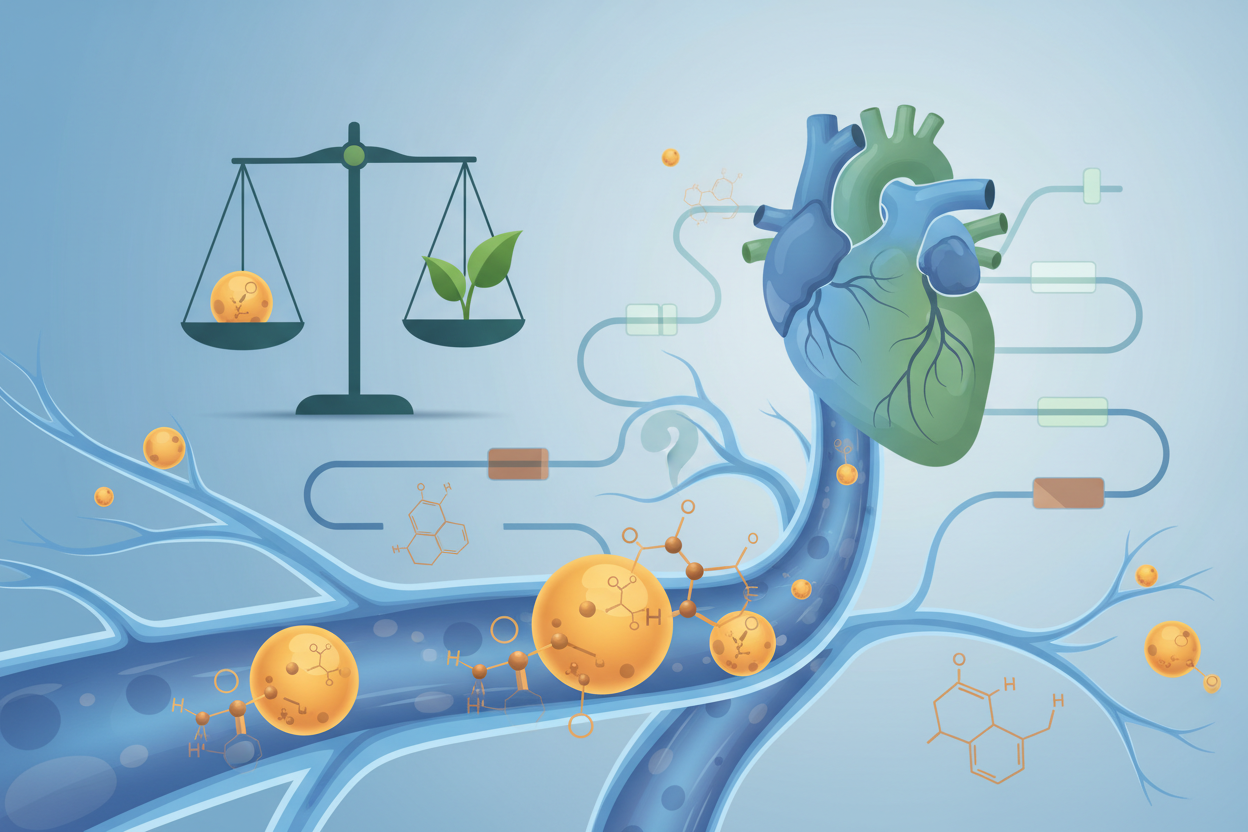In our pursuit of optimal health and vitality, we often place great emphasis on choosing the right foods. Although diet quality is undoubtedly important, the latest research suggests that there is an even more fundamental factor that has a crucial impact on our health and mitochondrial function – light.
Light as primary nutrition
Light is not just something that allows us to see. It is a powerful force that controls many biological processes in our body, including the regulation of circadian rhythms, hormone production, and mitochondrial function [1].
Research shows that exposure to natural sunlight, especially early in the morning, can:
- Synchronize our internal clocks and improve sleep quality [2]
- Increase serotonin production and improve mood [3]
- Support the synthesis of vitamin D, which is essential for immune function and bone health [4]
- Improve insulin sensitivity and regulate glucose metabolism [5]
Therefore, before we focus on the details of our plate, we should pay attention to our relationship with light. Try to spend some time outside every day, ideally at sunrise. Even just 10-15 minutes can have a significant impact on your health and energy levels.
Secondary but still important role of nutrition
Although light plays a primary role in regulating our health, nutrition remains crucial for providing the building blocks and fuel for our body. When creating a healthy diet, it is important to prioritize real, local, and seasonal (SLS) foods that are rich in nutrients.
SLS Foods: The Foundation of a Healthy Diet
SLS foods form the basis of a healthy diet. These foods are naturally rich in nutrients and contain fewer harmful substances compared to industrially processed foods.
Examples of SLS foods:
- Local and seasonal fruits and vegetables
- Pasture-raised meat (e.g., beef, lamb, game)
- Fish caught in the wild (e.g., salmon, sardines, mackerel)
- Free-range eggs
- Full-fat dairy products from pasture (for those who tolerate lactose)
- Whole grains (e.g., quinoa, oats, brown rice)
- Legumes
- Healthy fats (e.g., avocado, nuts, seeds)
Consumption of a diet rich in SLS foods provides the body with essential nutrients for optimal mitochondrial function and supports overall health [6].
Healthy fats and animal-based proteins
Basic healthy fats and proteins are often of animal origin. These foods have been the foundation of our ancestors' diets for thousands of years and provide unique nutrients that can be difficult to obtain from plant sources.
Quality animal products, such as pasture-raised meat, wild-caught fish, pasture-raised eggs, and full-fat pasture dairy products (for those who tolerate lactose), are rich in essential amino acids, omega-3 fatty acids, vitamins (especially B vitamins), and minerals like zinc and iron [7]. Pasture-raised meat also has a more favorable fatty acid profile compared to conventionally raised meat [8].
Fats as an Efficient Source of Energy
Healthy fats are not only essential for structural and regulatory functions in the body but also serve as an efficient energy source. While carbohydrates provide approximately 4 calories per gram and produce about 38 ATP molecules per glucose molecule, fats provide 9 calories per gram and produce an impressive 147 ATP molecules per fatty acid molecule [9].
This does not mean that we should consume fats at the expense of other macronutrients, but rather emphasizes the importance of including healthy fats in our diet. Monounsaturated and polyunsaturated fats, especially omega-3 fatty acids, support mitochondrial health and help regulate inflammation [10].
Diet diversity and its impact on the gut microbiome
Although animal products form the basis of a healthy diet, plant-based foods should not be overlooked. Fruits, vegetables, nuts, seeds, and whole grains provide fiber, antioxidants, and various phytochemicals that support health and the diversity of the gut microbiome [11].
Focus on a varied diet that includes a wide range of colors and types. Each plant has a unique nutritional profile and provides different benefits. Consuming a rainbow of naturally occurring colors in our diet can help us obtain the spectrum of nutrients our body needs to thrive.
Eating in harmony with natural cycles
Our modern foods and eating habits often differ greatly from those practiced by our ancestors. Industrially processed foods, year-round availability of exotic crops, and artificial lighting have disrupted our natural synchronization with the natural cycles.
For supporting optimal mitochondrial health and function, it is beneficial to align our eating habits with the rhythms of nature. This means eating local and seasonal foods whenever possible and adjusting the timing and frequency of our meals according to the time of day and season.
For example, in summer, when the days are long and there is an abundance of fresh fruits and vegetables, it can be beneficial to eat a lighter, plant-rich diet. In winter, when there is less sunlight and more cold, the body can benefit from a more nutritious diet with a higher proportion of healthy fats and proteins.
Conclusion
Creating a healthy diet that supports optimal mitochondrial function and overall health requires a holistic approach that recognizes the primary role of light and the importance of real, local, and seasonal (SLS) foods.
Start by spending time outdoors in natural light every day, ideally at sunrise. Focus your diet on quality SLS foods, including animal products, plenty of vegetables and fruits, and whole food sources of fats and carbohydrates. And finally, try to align your eating habits with the natural rhythms of nature by consuming local and seasonal foods and adjusting meal timing to the time of day.
Remember that the most effective changes are those that are sustainable in the long term. Be patient and kind to yourself on your journey to optimal health. With consistency and determination, you can transform your relationship with light, food, and your body, and discover a new level of vitality and well-being.
Sources:
[1] Fleury, N., Geldenhuys, S., & Gorman, S. (2016). Sun exposure and its effects on human health: Mechanisms through which sun exposure could reduce the risk of developing obesity and cardiometabolic dysfunction. International journal of environmental research and public health, 13(10), 999.
[2] Wright, K. P., McHill, A. W., Birks, B. R., Griffin, B. R., Rusterholz, T., & Chinoy, E. D. (2013). Entrainment of the human circadian clock to the natural light-dark cycle. Current Biology, 23(16), 1554-1558.
[3] Lambert, G. W., Reid, C., Kaye, D. M., Jennings, G. L., & Esler, M. D. (2002). Effect of sunlight and season on serotonin turnover in the brain. The Lancet, 360(9348), 1840-1842.
[4] Holick, M. F. (2007). Vitamin D deficiency. New England Journal of Medicine, 357(3), 266-281.
[5] Versteeg, R. I., Stenvers, D. J., Visintainer, D., Linnenbank, A., Tanck, M. W., Zwanenburg, G., ... & Kalsbeek, A. (2017). Acute effects of morning light on plasma glucose and triglycerides in healthy men and men with type 2 diabetes. Journal of biological rhythms, 32(2), 130-142.
[6] Merra, G., Miranda, R., Barrucco, S., Gualtieri, P., Mazza, M., Moriconi, E., ... & Di Renzo, L. (2016). Very-low-calorie ketogenic diet with aminoacid supplement versus very low restricted-calorie diet for preserving muscle mass during weight loss: a pilot double-blind study. European review for medical and pharmacological sciences, 20(12), 2613-2621.
[7] Daley, C. A., Abbott, A., Doyle, P. S., Nader, G. A., & Larson, S. (2010). A review of fatty acid profiles and antioxidant content in grass-fed and grain-fed beef. Nutrition journal, 9(1), 1-12.
[8] Benbrook, C. M., Davis, D. R., Heins, B. J., Latif, M. A., Leifert, C., Peterman, L., ... & Baranski, M. (2018). Enhancing the fatty acid profile of milk through forage-based rations, with nutrition modeling of diet outcomes. Food Science & Nutrition, 6(3), 681-700.
[9] Berg, J. M., Tymoczko, J. L., & Stryer, L. (2002). Biochemistry (5th ed.). W H Freeman.
[10] Bazinet, R. P., & Layé, S. (2014). Polyunsaturated fatty acids and their metabolites in brain function and disease. Nature Reviews Neuroscience, 15(12), 771-785.
[11] Valdes, A. M., Walter, J., Segal, E., & Spector, T. D. (2018). Role of the gut microbiota in nutrition and health. Bmj, 361.





Leave a comment
This site is protected by hCaptcha and the hCaptcha Privacy Policy and Terms of Service apply.